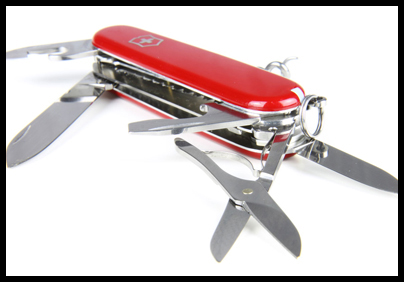ESOPs―The Swiss Army Knife of Liquidity Strategies
ESOPs serve as a utilitarian strategy for business owners looking for unique and effective ways to improve employee benefits and business flexibility.
William Stewart explains how an ESOP, depending on how you set it up, can function like a Swiss Army Knife. Depending on how you set it up, an ESOP is fully flexible. ESOPs, for instance, offer buyers and sellers a wide range of purchasing options that can vary from a minority stake to a full-fledged buyout. Once you decide on the size of the deal, you can also determine how much of the deal is done in assets or stock and use any number of financing structures to set an ESOP up.
Employee Stock Ownership Plans (ESOPs) offer business owners a flexible option for liquidity, business succession, and incentivizing employees. ESOPs are so flexible that one of the greater challenges in evaluating this option for owners of privately held companies is working through all of the different benefits to ensure the seller takes advantage of all of the benefits available to them and their companies. With all the tools they offer business owners, I think an ESOP is the Swiss Army Knife of liquidity strategies.
Business owners are initially attracted to ESOPs because they offer a tax advantaged strategy to sell all or a portion of their businesses while providing the benefit of ownership to their employees. Similarly most consumers are attracted to a Swiss Army Knife for the knife or perhaps the scissors. However, as we unfold the multipurpose tools that are ESOPs we find additional benefits that minimize personal tax and shareholder liability, enhance estate planning options, and provide significant flexibility in the structuring of the transaction.
Additional Benefits in the Sale
Within the inherent conflict between buyer and seller, negotiations often result in some terms benefiting the buyer and some benefitting the seller. One of these items that has ripple effects throughout the transaction is the buyer’s desire to buy assets and the seller’s desire to sell stock. An ESOP is compelled to buy stock due to its basic structure so the seller benefits without having to go through the standard give and take of a negotiation. By selling stock, the seller ensures that they will, at worst, receive capital gains treatment on any proceeds taxed as gains plus the ESOP can offer the option to defer all of the capital gains on the sale. Much like the spoon in the Swiss Army Knife, these personal benefits to owners selling to ESOPs are often overlooked in the initial ESOP overview.
Flexibility is a key benefit in any liquidity strategy and a sale to an ESOP is the most flexible of all. Many buyers require that they purchase a controlling interest in a company while an ESOP is open to purchasing interests ranging from a minority stake to 100% of the stock. The ESOP is also flexible regarding the financing structure that is best for the company as long as it falls within market rates. As soon as you think the ESOP structure doesn’t have additional flexibility, you discover another tool at your disposal.
Additional Benefits Post-Transaction
After the sale to the ESOP, the seller and the company may realize additional benefits that the transaction has provided above and beyond the initial reasons the seller decided to sell to the ESOP. One of the impacts of a leveraged ESOP is an immediate decline in the stock value post transaction due to the impacts of adding leverage to the company. However, this temporary drop in stock price can facilitate gifting stock at this lower price, which may allow the shareholder to transfer more shares while staying within the gift tax limitations.
Finally, the impact on employees may be the most overlooked reason for initiating a sale to an ESOP. There are numerous studies showing that employees are more productive and happier when working for ESOP-owned companies. This often translates to more profitable and successful companies post transaction. While this may not have been the reason business owners sold to an ESOP, it can often be the biggest unexpected benefit.
 The Bottle Opener
The Bottle Opener
Sometimes secondary benefits become the most valuable. While most business owners initially evaluate an ESOP strategy for the tax benefits that impact the seller and the company, there are ancillary benefits that enhance the benefits to both the seller and the company. Much like the bottle opener on a Swiss Army Knife, a seller may not enter into the ESOP transaction fully appreciating the extent of all of the benefits relating to an ESOP but they are very happy to have them.
William Stewart works at PCE Holdings. Reach him directly at (407) 621-2124 or email him at wstewart@pcecompanies.com









